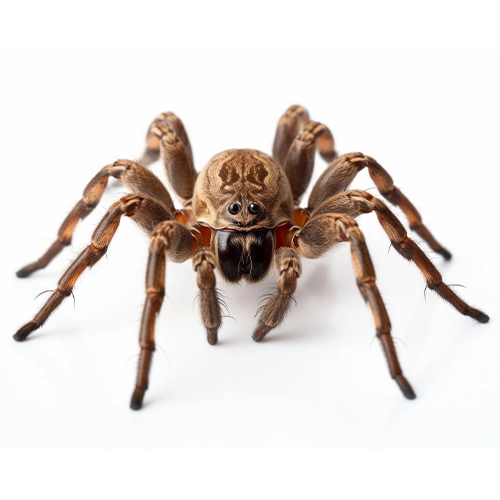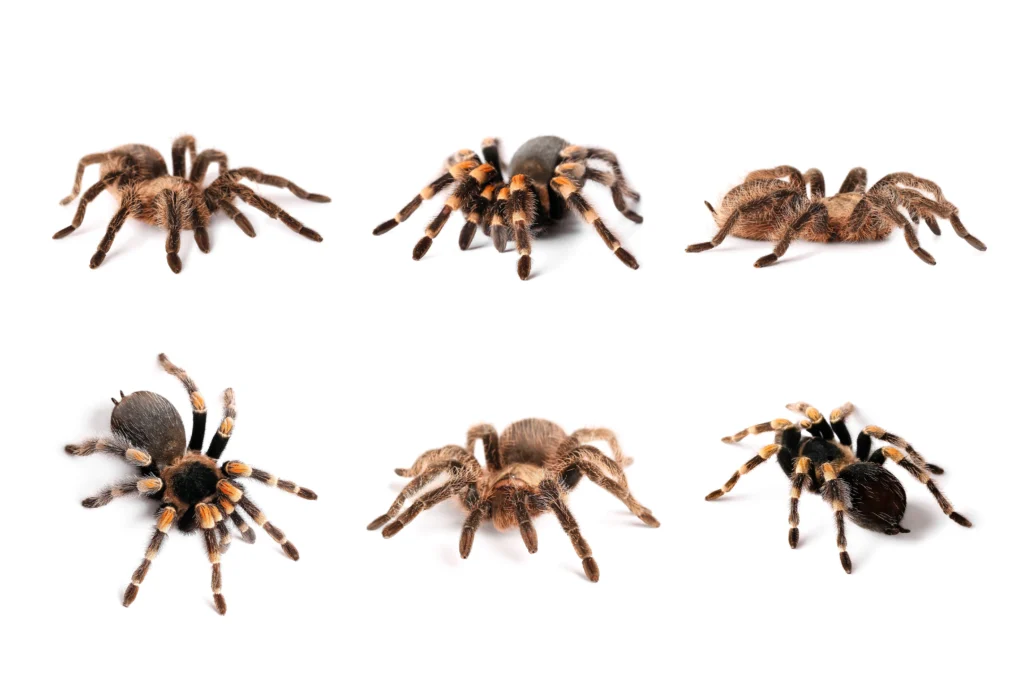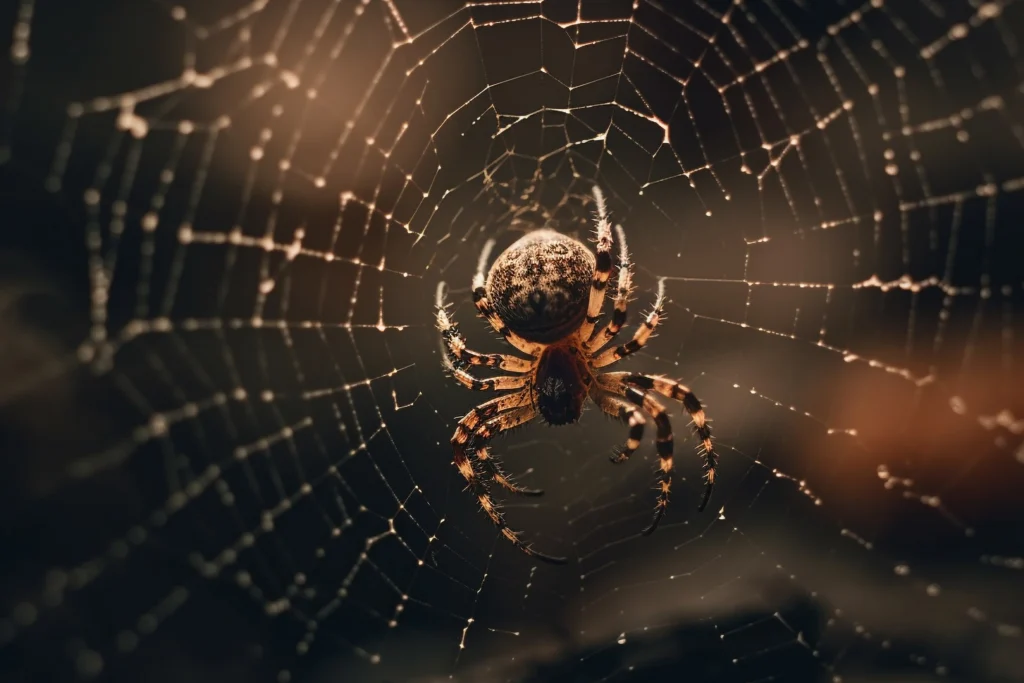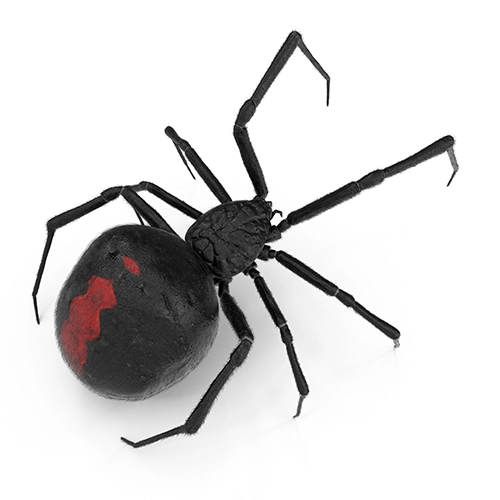A Comprehensive Guide to Species, Risks, and Effective Management Strategies
Colorado, a place of steep mountains and broad plains, hides a secret world of arachnids that flourish in its various habitats. Spiders weave fascinating narratives among its many populations, merging flawlessly with the state’s vast landscapes.
Colorado is home to an amazing range of different spider species that blend into their natural environments, ranging from Rocky Mountain peaks to the eastern plain expansive grasslands.
Although many people fear them, these arachnids serve important functions in the ecosystem as both predators and prey, with their silky hair adding a distinctive touch of artistic beauty to the wild. This post offers a comprehensive overview of the spider species, dangers, and practical methods for controlling infestations in Colorado.



Understanding Spiders
It requires a deep awareness of the complex biology and behavior of spiders to understand how they operate. These eight-legged arachnids, which are sometimes misunderstood, are extraordinary predators with well-calibrated evolutionary mechanisms. Spiders represent adaptation and efficiency in nature, from the delicate strands of their webs to the stealthy ambush methods they deploy. Their various species demonstrate a wide range of hunting techniques and environments, from tiny jumping spiders to ferocious tarantulas. Aside from their predatory abilities, spiders perform critical functions in ecosystems, regulating insect populations and guaranteeing ecological equilibrium. Accepting their complexity promotes a greater appreciation for the wonderful organisms that inhabit our planet.



Why Spiders Enjoy Colorado’s Climate
Spiders build tiny yet robust webs throughout Colorado’s diverse terrain, symbolizing nature’s beauty and adaptation. From the harsh heights of the Rocky Mountains to the vast plains below, these arachnids silently survive, their existence woven into the fabric of the state’s many ecosystems.
Spiders act as guards in Colorado’s wilderness, softly crossing the junctures of plant and wildlife, their silk threads sparkling with morning dew beneath the vast sky. They appear in the heat of summer, weaving their silken masterpieces among ponderosa pines, cottonwoods, and aspen groves. As fall arrives, their exquisite designs capture the golden light, displaying their eternal capabilities.
Despite their misunderstood reputation, Colorado spiders perform an important part in preserving ecological balance, managing insect populations, and contributing to the complex web of life. Spiders weave narratives of patience and tenacity amid the peaceful seclusion of Colorado’s woods, meadows, and deserts, their silent presence a reminder of nature’s complexity and beauty. These arachnids exemplify tenacity in the face of harsh terrain and ever-changing seasons, their fragile yet formidable life a monument to the Centennial State’s lasting spirit.
Types of Spiders in Colorado
Wolf Spiders
A unique species that flourishes in Colorado’s varied habitants is the Wolf spider, which shows persistence and flexibility in the face of harsh terrain. These arachnids move stealthily and precisely throughout the state’s plains, mountains and woodlands. With different markings and hunting habits, they serve critical roles in preserving ecological balance, symbolizing Colorado’s untamed spirit and the rich web of life that surrounds it.
Jumping Species
Colorado’s varied terrain are home to a fascinating assortment of jumping spider species, which contribute dynamic vitality to the state’s arachnid population. These nimble species, renowned for a
powerful sense of vision and inventive hunting strategies, gracefully move over the hilly landscape. They differ in color and behavior from the recognizable bold jumper (Phidippus audax) to the secretive zebra spider (Salticus scenicus), adding to the region’s rich biodiversity.
Tarantula
The elusive Tarantula spider species can move across its environment stealthily. These powerful arachnids due to their intimidating size and velvety look fascinate both residents and tourists. However, they have a fearsome reputation because of their mysterious ways and nocturnal habits, Tarantula spiders add to Colorado’s rich biodiversity, representing tenacity in the harsh Rocky Mountain environment.
Cellar
Scientifically known as Pholcidae, this species makes its fragile webs in the dark recesses of Colorado’s cellars and basements. This species, which feeds on mosquitoes or other tiny insects, acts as a natural pest controller despite its unsettling look. The Cellar spider, which symbolizes the delicate balance of nature within urban surroundings, provides an unsettling charm to the state’s underground places with its long, spindly legs and elaborate silk architecture.
Black Widow
One can easily identify this spider species with its blend of glossy black and red spot on its abdomen. Their severe neurotoxic nature cause terror and are present in unique environment settings. They have the ability to bite, but the resulting effects are those of pain or severe reactions in rare cases. Despite their menacing appearance, this native spider species is critical to preserving a delicate ecological balance by controlling bug populations.
Orb Weaver
This species creates a fascinating sight within the state’s varied environment. The Orb weavers are the epitome of nature’s inventiveness, with their complex webs woven throughout vegetation. The Araneidae family has colorful patterns and hues that fit in well with Colorado’s scenic surroundings. Small in height, these expert weavers contribute much towards ecological balance and lend a magical touch to Colorado’s natural places.
Potential Risks of Spider Infestations At Home
There are several possible concerns associated with having spiders in your house, both tangible and psychological. Some species can be non-aggressive but are capable of biting victims with poison that can result in pain or allergic responses. Furthermore, because spiders feed on insects, their presence may suggest an infestation or other underlying pest problems.
Moreover, the mere sight of spiders can cause worry and anxiety in those who have arachnophobia, which can negatively affect their everyday life and mental health. Although being uncommon in homes, several species can be extremely dangerous to human health due to their poisonous bites. Consequently, even while spiders support the balance of the ecosystem, their presence indoors calls for vigilance and aggressive
pest control.



DIY Management Strategies
Taking control of spider infestations at home with do-it-yourself strategies requires a combination of natural repellents with well-thought-out interior design changes. Caulking gaps and crevices reduces their access to your living areas as it blocks entry locations. Since spiders prefer untouched spaces, it is essential to keep your surroundings clutter-free. Use natural repellents that spiders dislike, such as vinegar, citrus peels, or essential oils like peppermint, tea tree or lavender. Dust or vacuum regularly can help to interrupt their breeding sites. Another factor that is outside landscaping involves keeping plants healthy and pruning shrubs to reduce hiding places close to entrances. Being vigilant and consistent are essential to keeping your house free of spiders.
Reasons to Seek Expert Help
Trained professionals have the ability to precisely identify spider species and determine the degree of an infestation, which is critical for developing efficient eradication tactics. Given the varying behaviors and possible risks associated with distinct spider species, professional involvement is necessary to enable accurate identification and risk assessment. This knowledge allows for the application of tailored treatments, reducing threats to health and property while effectively addressing the infestation issue.
One of the main reasons to seek the expertise of professionals when you are facing spider infestations is safety concerns. Although these arachnids are generally harmless, some variants are venomous, which can be problematic, especially in homes with small children or pets. Professional exterminators have the skills and equipment necessary to identify different types of spiders accurately and execute safe, effective removal methods. By using their services, it guarantees homeowners of a safe and secure living environment, as well as the elimination of present threats and prevention of recurrence.
Although do-it-yourself remedies can provide short-term relief, licensed exterminators have the training and resources necessary to address infestations completely. They are able to determine the species, evaluate the degree of the infestation, and apply focused treatments that take care of the spiders that are visible or elusive. Professionals also minimize dangers to property and human health by using safe and ecologically friendly methods. Their knowledge guarantees long-lasting fixes, protecting houses against frequent spider incursions.
Preventive Strategies
Sealing entrance points is an essential preventive step against infestations as it obstructs spiders’ pathways. It essentially prevents intrusion of spiders in indoor places by closing up cracks, gaps, and crevices, reducing the possibility of an infestation. This preventive strategy helps preserve a sanitary and pleasant living environment, supporting residents’ peace of mind and well-being, in addition to protecting against the annoyance and discomfort of spider presence.
Eliminating clutter from your house is another smart way to protect it against spider infestations, not only to be tidy. Spiders like secluded, untouched areas where debris gathers, such heaps of clothing or old newspapers. You can disturb the favored habitats of spiders and discourage them from settling in by clearing up these congested locations. By keeping your living area tidy and free of clutter, you can successfully prevent spider infestations before they start by denying them the hiding places they seek.



Regular outdoor upkeep is pivotal in deterring spider infestations at home. You can get rid of spider
hibernation spots and possible entrance points by pruning the surrounding plants and clearing away any rubbish. Regularly sweeping away cobwebs and sealing cracks in walls and windows further restricts their access indoors. Additionally, keeping outdoor lights off or using yellow bulbs reduces attractants for insects, which in turn decreases the spider population drawn to prey.
Spiders weave complex links playing an essential part in Colorado’s various ecosystems. They demonstrate flexibility and resilience by exploring nature as quiet custodians of equilibrium. From the high peaks to the wide-open plains, these ecosystem marvels serve as a constant reminder of the intricacy as well as beauty present in the world around us. Sealing access points and clearing debris are two preventive actions that homeowners can do to lessen the likelihood of a spider infestation. Adopting these techniques encourages coexistence between people and spiders, creating a more sustainable and safe living environment in Colorado.
If you think spiders are causing you problems in Colorado Springs, CO or anywhere in Teller County or El Paso County, please do not hesitate to
contact us today! We will help resolve your problem quickly, safely, and at affordable rates.
